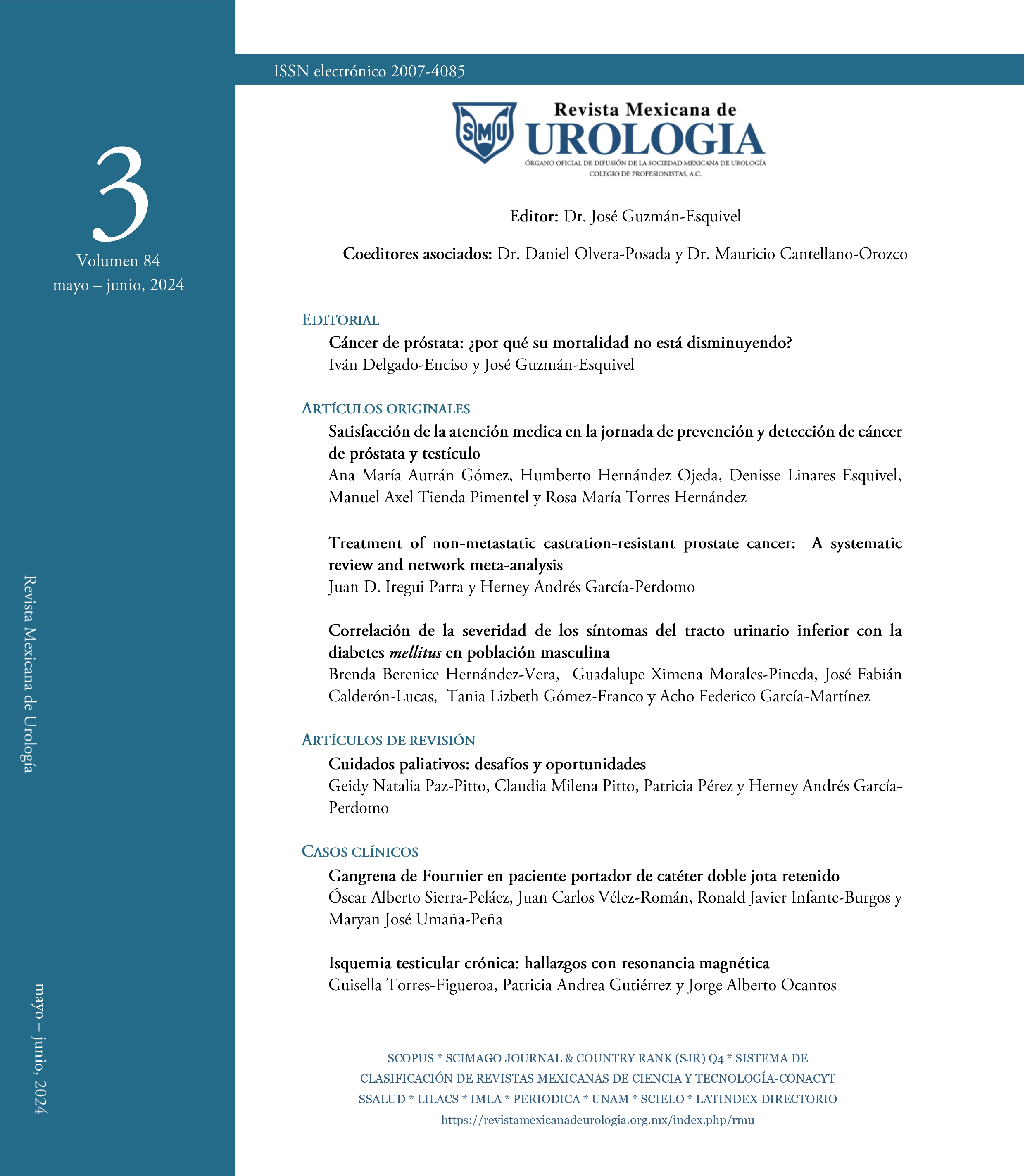Chronic testicular ischemia: MRI findings
DOI:
https://doi.org/10.48193/t53b2k41Keywords:
isquemia, testis, magnetic resonance imagingAbstract
18-year-old male patient with a history of myelomeningocele consulted for an MRI due to chronic scrotal pain with an ulceration in the right scrotum. MRI demonstrates there was an absence of contrast uptake and a whirlpool sign meaning that the right testicle was not viable and orchiectomy was performed. Although doppler ultrasound is the gold standard for diagnosing testicular torsion, in case of diagnostic doubt it is appropriate to perform an MRI in order to preserve testicular vitality and avoid unnecessary orchiectomies.
References
Karaguzel E, Kadihasanoglu M, Kutlu O. Mechanisms of testicular torsion and potential protective agents. Nature Reviews Urology. 2014;11(7): 391–400.
Wang F, Mo Z. Clinical evaluation of testicular torsion presenting with acute abdominal pain in young males. Asian Journal of Urology. 2019;6(4): 368–372. https://doi.org/10.1016/j.ajur.2018.05.009
Cassar S, Bhatt S, Paltiel HJ, Dogra VS. Role of Spectral Doppler Sonography in the Evaluation of Partial Testicular Torsion. Journal of Ultrasound in Medicine. 2008;27(11): 1629–1638. https://doi.org/10.7863/jum.2008.27.11.1629.
Avery LL, Scheinfeld MH. Imaging of Penile and Scrotal Emergencies. RadioGraphics. 2013;33(3): 721–740. https://doi.org/10.1148/rg.333125158.






